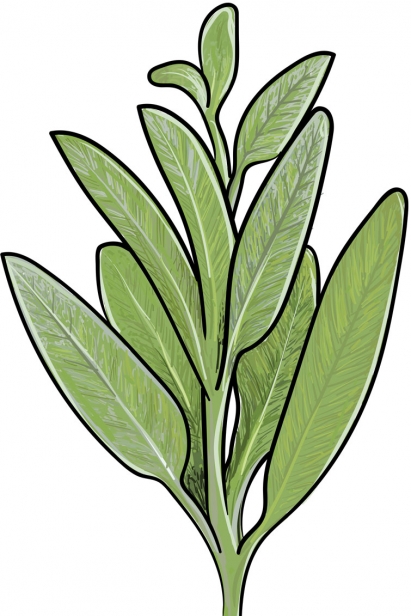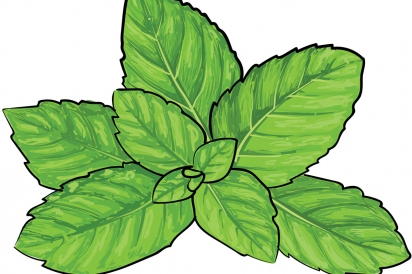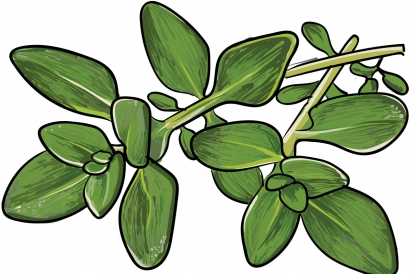Preserving Herbs
There's a lot of idealism that goes with seasonal cooking. I gladly focus my shopping dollars at the farmers market, changing my meals with the seasons, growing what I can in my own garden, and spending precious time on garlic braids and giant stockpots of apple butter. But, along with my farmers market euphoria comes a healthy dose of realism: I'm the working mom of two young boys who are as picky as I am adventurous, and who need my attention more than I need to put up jars of pickles, jams, and mustard. I do plenty of that at my day and night job as a restaurant chef.
My seasonal cooking at home is much more straightforward: lots of greens in the spring, the glut of color and flavor in the summer, and then, my favorite, the earthiness of roots and storage vegetables in the cold months. Perhaps it is the return to sweater weather, hot toddies, and the crackle of a wood stove that makes me long for fall. But it's also roasted beets, parsnips, and delicata squash, which bear the deep flavors of warmth and sustenance. But the cold months stretch long, and, after the first month or so, those wonderful earthy flavors feel heavy – and a bit boring. That's where herbs come in.
Herbs can transform a dish. And they don't have to be fussy or expensive. My garden is small, yet I still manage to keep a variety of herbs going with a very simple philosophy: I plant the seedlings in the ground, rely on rain, and snip sprigs when I feel like it. I have killed plenty of plants with this approach, however I've also learned which herbs take to my lack of attention. For my garden, these herbs include parsley, sage, basil, mint, and thyme.
Italian Parsley
My kid brother likes to complain that my home cooking all tastes the same, but what he really means is that it all tastes like parsley. And he's right. I love parsley's crisp, clean brightness in salads and compound butters, scattered over pasta, and whirred into pesto. And not only does it overwinter in the garden, but the leaves stay green enough to harvest in the snow. In the spring, the plant sends up flowers and then reseeds itself. I leave it in the ground and pick as needed.
Sage
Sage is a beautiful perennial that sends out delicate purple flowers in the spring and summer. The leaves stay green and delicious through the cold months, perfect for Thanksgiving turkey and holiday dressing. Sage is also delicious cut into thin ribbons and mixed into biscuits or a batch of cornbread. While fresh sage will grow through the winter, dried sage is also an option if you end up with a surplus. Like mint (below), sage can be hung upside down until dry and then crumbled into a jar.
Basil
Fresh basil is summer magic. Dried basil is a disappointment. Before the first frost, I cut back my basil patch and save it in the freezer. If I'm feeling ambitious and my pantry is stocked with all the necessary ingredients, I'll make an enormous batch of pesto and freeze it in half-pint jars. But I'm more likely to be out of Parmesan or motivation, in which case I puree the basil leaves in my food processor, adding enough water to keep the leaves moving. When they're thoroughly pureed, I portion the basil pulp to ice cube trays and freeze, later removing the frozen cubes and storing in a plastic storage bag in the freezer. The individual cubes are perfect for tossing into a pot of soup or beans.
Mint
Beware of fresh mint in your garden. Once planted, it tends to creep into every nook and cranny and pop up where you least expect it. I've started planting mint in pots that are sunk into the soil, keeping the plants where I want them. Unlike basil, dried mint is still delicious and perfect for a cup of herbal tea. To dry mint, I take a small bunch, tie the stems together, and hang the bundle upside down in a dry place that gets adequate air circulation. As long as you avoid the bathroom or a dank basement, almost any place will work. Once completely dry, crunch the leaves into a jar and store. For a cup of mint tea, add a spoonful of dried mint to a cup of boiling water. Steep for 3-5 minutes before straining. My kids enjoy mint tea with a bit of milk and honey.
Thyme
A bit of thyme lends a delicious herbal quality to a variety of dishes. Thyme is great in a pot of chicken soup, scattered over roasted sweet potatoes, or sprinkled into scrambled eggs. But thyme isn't just good for savory dishes. I like to make thyme sugar by pulsing fresh thyme leaves with sugar in the food processor. The sugar keeps in the refrigerator for months, and is delicious sprinkled over shortcake before baking, incorporated into scones, and whipped into cream for topping desserts.
Illustrations by Greg Moody









